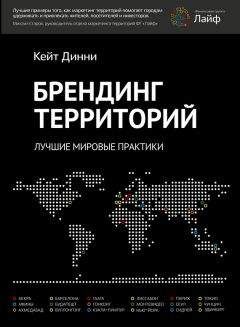200. Ooi, C.-S. and Stoben B. (2010), Authenticity and place branding: The arts and culture in branding Berlin and Singapore, in Re-Investing Authenticity: Tourism, Places and Emotions, Knudsen, В.Т. and Waade, A.M. (eds), Channel View Publications, Bristol, United Kingdom, pp. 66–79.
201. Osborne, R. (2000), Travelling Light: Photography, Travel and Visual Culture, Manchester University Press, Manchester; United Kingdom.
202. Paddison, R. (1993), City marketing, image reconstruction and urban regeneration, Urban Studies, Vol. 30, No. 2, pp. 339–350.
203. Palmer, A. (2002), Destination branding and the Web, in Morgan, N., Pritchard, A. and Pride, R. (eds), Destination Branding: Creating the Unique Destination Proposition, Butten/vorth-Heinemann, Oxford, United Kingdom, pp. 186–197.
204. Papadopoulos, N. and Heslop, L.A. (1993), Product-Country Images: Impact and Role in International Marketing, International Business Press, New York, United States.
205. Parent, M.M. and Deephouse, D.L. (2007), A case study of stakeholder identification and prioritization by managers, Journal of Business Ethics, Vol. 75, No. 1, pp. 1–23.
206. Parkerson, B. and Saunders, J. (2005), City branding: Can goods and services branding models be used to brand cities? Place Branding, Vol. 1, No. 3, pp. 242–264.
207. Parmar, V. (2008), Here, farmers welcome Nano, Sunday Times, Ahmedabad edition, 5 October; p. 1.
208. Peck, J. (2005), Struggling with the creative class, International Journal of Urban and Regional Research, Vol. 29, No. 4, pp. 740–770.
209. Peel, D. and Lloyd, G. (2008), New communicative challenges: Dundee, place branding and the reconstruction of a city image, Town Planning Review, Vol. 79, No. 5, pp. 507–532.
210. Pesek, W. (2006), Our future up in the air, The Standard, 8 December; available at: http://www.thestandard.com.hk/news_detail.asp?pp_cat=15&art_id=33647&sid=11224813&con_type=1&d_str=20061208&sear_year=2006 (accessed 20 May 2010).
211. Peterson, R.A. and Jolibert, A.J.R. (1995), A meta-analysis of country-of-origin effects, Journal of International Business Studies, Vol. 26, No. 4, pp. 883–900.
212. Pine, J. and Gilmore, J. (1999), The Experience Economy: Work is Theatre & Every Business a Stage, Harvard Business School Press, Boston, United States.
213. Prashanth, B. (2009), Ahmedabad: The city of the future, The Times of India, Ahmedabad edition, 10 October; Special Supplement, p. 1.
214. Prentice, R. and Andersen, V. (2007), Interpreting heritage essentialisms: Familiarity and felt history, Tourism Management, Vol. 28, No. 3, pp. 661–676.
215. Promoting Edinburgh as a destination: Investigating the future promotion of Edinburgh as a place to live, invest and visit. February 2008, The Communication Group. Available at: http://www.edinburgh.gov.uk/internet/Attachments/lntemet/Business/Economic_development/Promoting_Edinburgh_as_a_Destination.pdf (accessed 12 February 2010).
216. Puczko, L., Ratz, T. and Smith, M. (2007), Old city, new image: Perception, positioning and promotion of Budapest, Journal of Travel and Tourism Marketing, Vol. 22, No. 3, pp. 21–34.
217. Puntigam, M., Braiterman, J. and Suzuki, M. (2010), Biodiversity and new urbanism in Tokyo: The role of the Kanda River, paper presented at the International Federation of Landscape Architects 47th World Congress, 28–30 May, Suzhou, China.
218. Reader, I. (2004), Cities, Atlantic Monthly Press, New York, United States.
219. Richards, B. (1992), How to Market Tourist Attractions, Festivals, and Special Events, Longman, Essex.
220. Robertson, S. (2008), Malaysia education: Strategic branding leads to growth in international student numbers 2006-8, GlobalHigherEd, available at: http://globalhighered.wordpress.com/2008/03/16/malaysias-international-student-numbers-increase-by-30-between-2006-8/ (accessed 27 January 2010).
221. Rowley, J. (2004), Online branding, Online Information Review, Vol. 28, No. 2, pp. 131–138.
222. Russell, D., Mort, G.S. and Hume, M. (2009), Analysis of management narrative to understand social marketing strategy: The case of Branding Logan City. Australasian Marketing Journal, Vol. 17, No. 4, pp. 232–237.
223. Saffron Brand Consultants (2008), The City Brand Barometer 2008, www.saffron-consultants.com
224. Salomonsson, A. (1984), Some thoughts on the concept of revitalization, Ethnologia Scandinavica, Vol. 1, pp. 34–47.
225. Sauer A. (2006), Las Vegas cashes in, Brandchannel, available at: http://www.brandchannel.com/features_profile.asp?pr_id=292 (accessed 10 July 2009).
226. Scott, A.J. (2006), Creative cities: Conceptual issues and policy questions, Journal of Urban Aprs, Vol. 28, No. 1, pp. 1–17.
227. Selby, M. (2004), Understanding Urban Tourism: Image, Culture and Experience, I. B. Taurus & Co., London, United Kingdom.
228. Seno, A. (2009), Art wars: Hong Kong vs Singapore, Wall Street Journal [online], 30 October; available at: http://online.wsj.com/article/S125678376301415081.html (accessed 24 November).
229. Sesser, S. (2006), The cheapest city on earth, The Wall Street Journal [online], 21 October; available at: http://online.wsj.com/article/SBI16137824861399313.html (accessed 21 January).
230. Shah, R. (2008), Nano will be made in Ahmedabad, Sunday Times, Ahmedabad edition, 5 October, p. I.
231. Shah, R. and Shukla, N. (2009), Liquidity flows into ‘dry’ Gujarat, The Times of India, Ahmedabad edition, 12 January, p. I.
232. Sharp, L. (2001), Positive response action: The ultimate goal of website communication, Journal of Communication Management, Vol. 6, No. 1, pp. 41–52.
233. Sheth, J. and Sisodia, R. (2005), A dangerous divergence: Marketing and society, Journal of Public Policy and Marketing, Vol. 24, No. 1, pp. 160–162.
234. Skinner, H. (2005), Wish you were here? Some problems associated with integrating marketing communications when promoting place brands, Place Branding, Vol. 1, No. 3, pp. 299–315.
235. Smith, A. (2005), Conceptualizing city image change: The ‘re-imaging’ of Barcelona, Tourism Geographies, Vol. 7, No. 4, pp. 398–423.
236. Smith, M.F. (2004), Brand Philadelphia: The power of spotlight events, in Morgan, N., Pritchard. A. and Pride, R. (eds), Destination Branding: Creating the Unique Destination Proposition, Second edition, Butterworth-Heinemann, Oxford, United Kingdom, pp. 261–278.
237. Sterne, J. (1999), World Wide Web Marketing, Second edition, Wiley, New York, United States.
238. Svenska Livsmedel (2009), Det nya matlandet: Att gora naringspolitik av gastronomi (In English: The new food land: Making economic policies of gastronomy), Svenska Livsmedel, No. 6, pp. 20–22.
239. Sya, L.S. (2005), Branding Malaysia, Oak Enterprise, Petaling Jaya, Malaysia.
240. Tatevossian, A.R. (2008), Domestic society’s (often-neglected) role in nation branding, Place Branding and Public Diplomacy, Vol. 4, No. 2, pp. 182–190.
241. Tellstrom, R., Gustafsson, I.B. and Mossberg, L. (2005), Local food cultures in the Swedish rural economy, Sociologia Ruralis, Vol. 45, No. 4, pp. 346–360.
242. Tellstrom, R., Gustafsson, I.B. and Mossberg, L. (2006), Origin as brand: Converting anonymous food products into symbols of place using regional food cultural heritage, Place Branding, Vol. 2, No. 2, pp. 130–143.
243. Temporal, R. (2001), Branding in Asia, John Wiley and Sons, Singapore.
244. The Economist (2008), The rivals – London and Paris, 15 March, p. 35.
245. The Globe and Mail (1987), Peter Ustinov Interview with John Bentley Mays, I August 1987.
246. The Governor’s Residence Cookery Book – Food from the West for Everyday and Festive Meals (1999). In Swedish: Residensets kokbok: Mat frin vast till vardag och fest., Nordbok International, Gothenburg, Sweden.
247. The Star Online (2008), Highlights of Budget 2009, 29 August, available at: http://thestarcom.my/news/story.asp?file=/2008/8/29/budget2009/20080829161149&sec=budget2009 (accessed I I January 2010).
248. The Times of India (2009), Apco to market Vibrant Guj, Ahmedabad edition, 15 October, p. I.
249. The Times of India (2010a), One more feather in the cap for city BRTS, 29 May, p. 2.
250. The Times of India (2010b), At 50, ready to rival Mumbai, Ahmedabad edition, I May, p, I.
251. Therkelsen, A. and Halkier, H. (2008), Contemplating place branding umbrellas. The case of coordinated national tourism and business promotion in Denmark, Scandinavian Journal of Hospitality and Tourism, Vol. 8, No. 2, pp. 159–175.
252. Thetourismcompany.com (2009), Twitter and its use by tourism destinations, available at: http://www.thetourismcompany.com/topic.asp?topicid=21 (accessed 12 January 2010).
253. Tourismireland.com (2007), Tourism Ireland launches the world’s first tourism marketing drive in ‘Second Life’, available at: http://www.tourismireland.com/Horne/about-us/press-releases/2007/Tourism-lreland-Launches-the-World%E2%80%99s-First-Tourism.aspx (accessed 6 January 2010).
254. Travolution.co.uk (2009), Case study – WAYN-Joburg tourism, available at: http://www.travolution.co.uk/articles/2009/02/23/2258/case-study-wayn-joburg-tourism.html (accessed 5 January 2010).
255. Tregear, A. (1998), Artisan producers in the UK food system: Attributes and implications, paper presented at the Agricultural Economics Society Annual Conference, University of Reading, 26 March 1998.

![Rick Page - Make Winning a Habit [с таблицами]](https://cdn.my-library.info/books/no-image.jpg)


